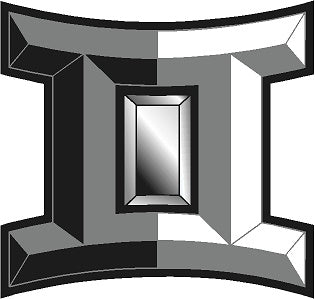(Originally published August 7th, 2017)
Phew, what a week! We saw a few hundred new faces this week looking for solar eclipse glasses. Many new fans were earned when the rest of Gemini’s was discovered on their visit. Why were the glasses so hard to find these last few days though?

I had been hearing for weeks about free glasses giveaways – at libraries, colleges, astronomy clubs, etc. As a small retailer I couldn’t see the sense in investing in stocking something that no one will want after this Monday – especially when they are available for free.
I decided to order 100 last weekend; mostly to meet the needs of my immediate family and assuming I’d be left with several unwanted pairs. I opened the box Wednesday and tucked the announcement in with a new rock order post with little expectations. Within an hour I realized how much unmet demand there was and scrambled to the Web to find more to be over-nighted. At that point American Paper Optics (who I initially ordered from) had tripled the price and was only shipping packs of 25. Most other suppliers had sold out. I was able to find americaneclipseglasses.com who were accepting overnight orders until 3pm mountain time that day. I ordered 500 – I really, really wish I had ordered 5000!
The box arrived as planned the next day. I opened the box around 12:15 and didn’t leave the register until they were sold out! The pattern was text someone with a hold, ring someone out, respond to a FB message to store, repeat.
Requests to hold glasses came in bunches. I did my best to take numbers and inform people when they were in. One thing I learned is that holds are a bad idea with hot items like this. The frenetic pace of those 36 hours left little room to divide up glasses and contact customers – and it made little sense to do so when a line of customers were standing with money ready most of the day. The pace of the rush was unbelievable, I ended up shorting myself on glasses even! A pack of 50 I thought I had set aside got gobbled up in the rush and so several close friends, my sister and my own family got less than we wanted. I’m taking my 3 boys to Nashville with a single pair. That pair I got from sitting in on an hour and a half astronomy club presentation at the college. I learned a few things about safe, indirect viewing at the presentation I’ll share.


First off what is the risk? The danger is in the power of the mind. The iris of the eye is similar to the lungs. It operates automatically but the mind can override it. When an eclipse is happening the light outside dims. Here in Zanesville when it reaches 85% coverage, it will be about as bright as a full moon outside. That little sliver of the sun that is exposed is as bright as ever though. As you look at the eclipse with the naked eye your eyes dilate because your mind expects something darker – making your eyes more vulnerable to being burned. If you look directly at it long enough the optometrist will know at exactly what moment you looked at the eclipse because that image will be burned in your cornea for life!


Now for alternatives to eclipse glasses. Those wanting to use welding glasses – NASA recommends shade 13 or 14 for safe viewing. 2 shade 7s stacked together will give shade 14.
The common indirect method is a projection box. I’ll be traveling with a lot of cardboard, aluminum foil and pins so me and the boys can experiment with different setups. It’s very simple and nearly free. Hereis one of many tutorials out there.
A cool thing I learned at the astronomy club meeting was to spread a white sheet on the ground. If you place it under a tree where light is coming through the canopy it will work kind of like a big projection box. At some point some kind of snake-like shadows will show up and dance on the sheet. Scientists haven’t figured out what causes them and NASA wants pictures so here is a chance to participate in some citizen science!


The other thing I learned is that ever person doesn’t really need their very own pair of eclipse glasses. This event happens over a couple hours – and you can’t see anything at all in the glasses besides the sun. So the question is how long is anyone’s attention span to look at a single point of focus? Most people will only use the glasses for a matter of seconds or minutes. Passing a single pair of glasses amongst several people should be plenty of direct viewing time for everyone.

